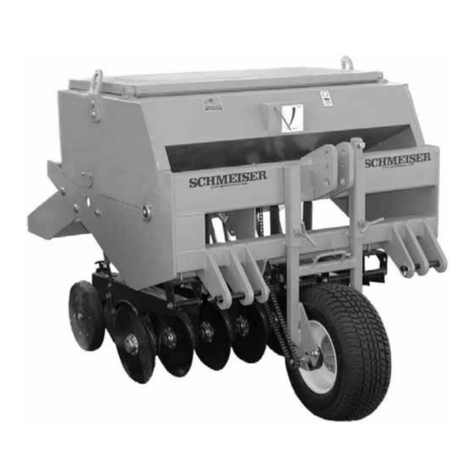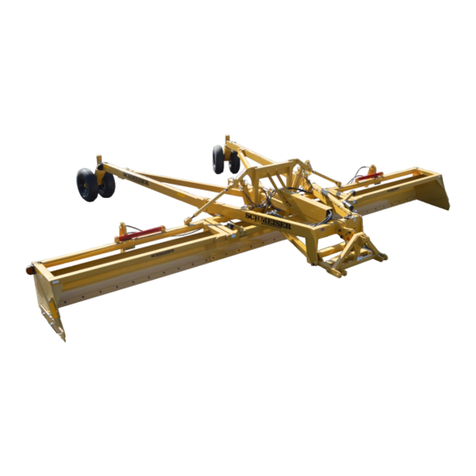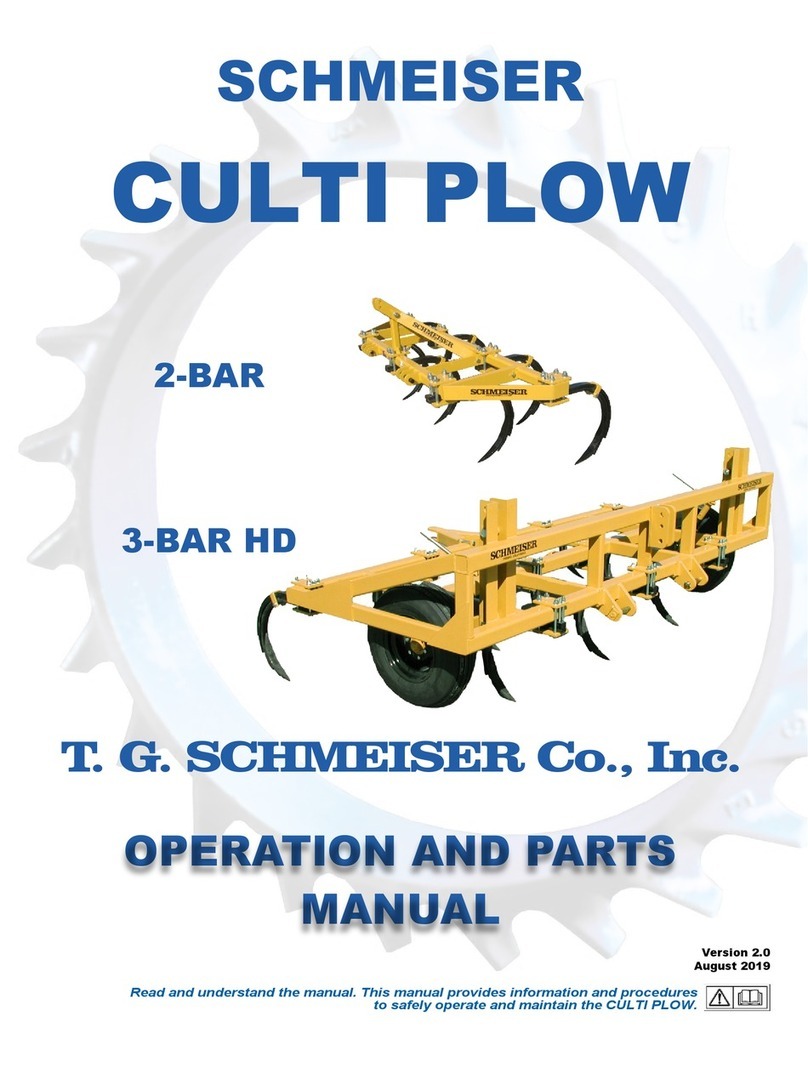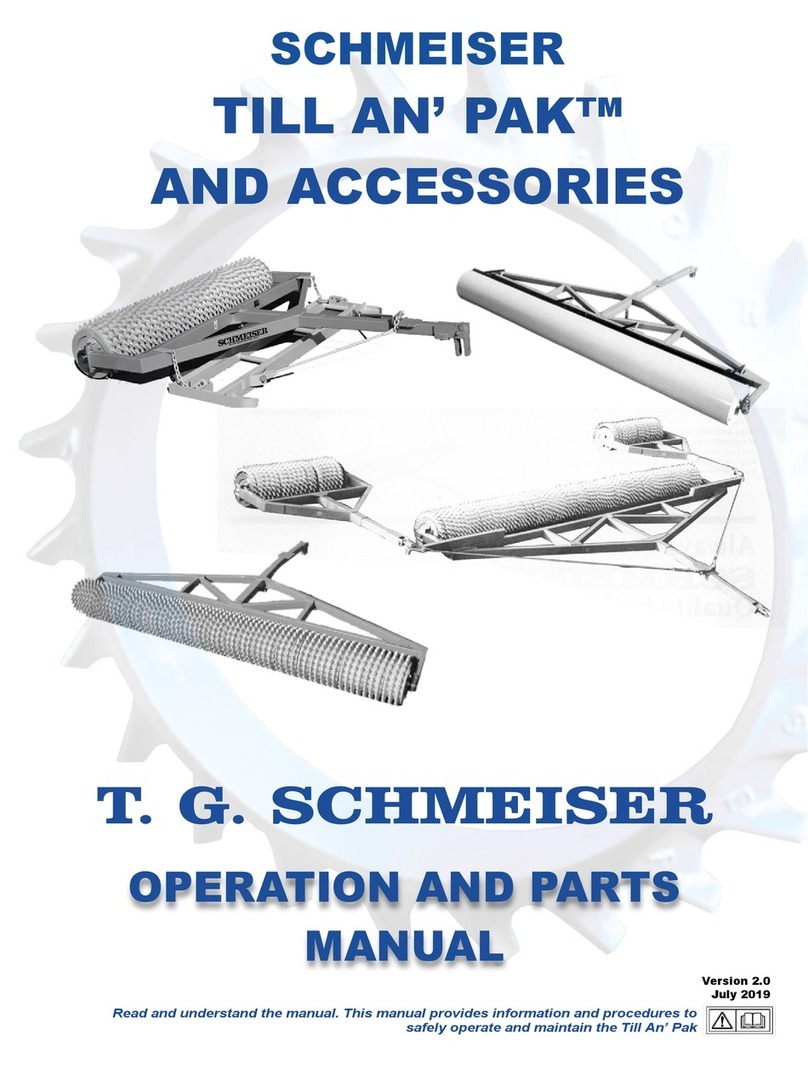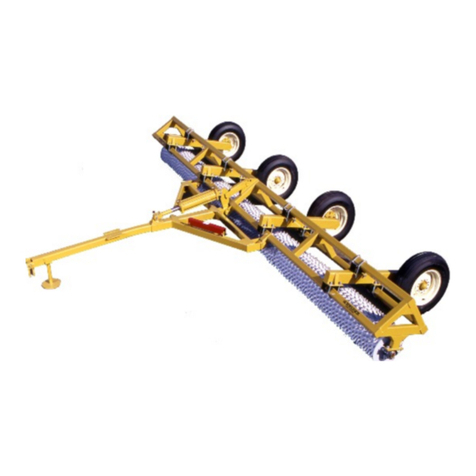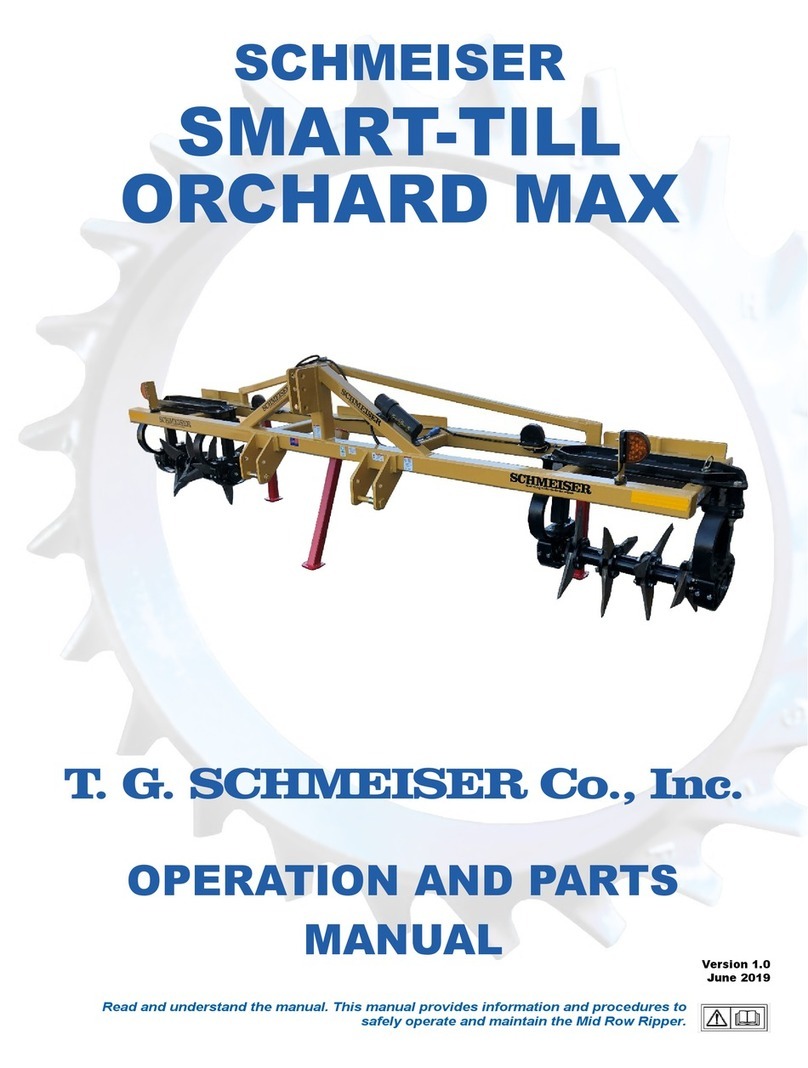
Bantam LevelerT. G. Schmeiser Co., Inc.
Ph. (559) 268-8128
Fax (559) 268-3279
www.tgschmeiser.com
3
ASSEMBLY..............................................................18
Assembly Instructions.........................................18
Initial Setup Checklist.........................................20
Implement Break-In............................................20
Connecting to Tractor.........................................20
Detaching from Tractor.......................................20
MAINTENANCE.......................................................21
Lubrication Points...............................................21
Wheel Hub Bearings.................................21
Bucket Cranks...........................................21
Roller Bearings..........................................21
Service Items......................................................21
Hydraulic Hoses........................................21
Wheel Axle Bearings.................................21
Tires...........................................................21
Ground Engaging Components........................21
Bucket Blade............................................21
Rear Roller...............................................21
Maintenance Schedule.......................................22
STORAGE................................................................23
Storage Preparation...........................................23
Placing in storage...............................................23
Removing From Storage..................................23
PARTS SECTION.....................................................24
Component Nomenclature..................................24
Ordering Parts....................................................26
Parts Drawings...............................................26
Bucket Crank Assembly..........................26
Wheel Axle Bearing Assembly...............27
Wheel Axle Hub Assembly........................28
HYDRAULIC DIAGRAMS............................................29
NOTES......................................................................30
LIMITED WARRANTY STATEMENT........................31
CONTENTS
INTRODUCTION........................................................4
Engineered for Long Life...................................4
Serial Number Information....................................4
Replacement Parts................................................4
Warranty Information............................................4
Serial Number Location.........................................4
Factory Contact Information..................................4
Dealer Contact Information....................................4
SPECIFICATIONS......................................................5
SAFETY......................................................................6
Safety Alert Symbols............................................6
Safety Icons Nomenclature..................................7
Personal Protection/Important Information..7
Prohibited Actions........................................7
Hazard Avoidance.......................................7
General Safety......................................................8
Assembly Safety...................................................8
Towing Safety.......................................................9
Safety Chain................................................9
Highway and Transport Operations..........10
Operation Safety.................................................10
Tractor Requirements................................10
Tractor Safety Devices..............................11
ROPS and Seat Belt..................................11
Attaching to Tractor............................................11
Prior to Connecting Unit ............................11
Connecting to the Tractor..........................11
Hydraulic Component Safety..............................11
Maintenance Safety............................................12
Tire Safety.................................................13
Bolt Torque Requirements.........................13
Tire and Lug Torque Specifications...........13
Welding Repairs........................................14
Storage Safety...................................................14
Disposal of Equipment at End of Useful Life......14
Safety Marking and Lighting.............................15
SAFETY SIGNS AND DECALS.......................16
Safety Sign Placement..................................16
Safety Signs and Decals...................................17






